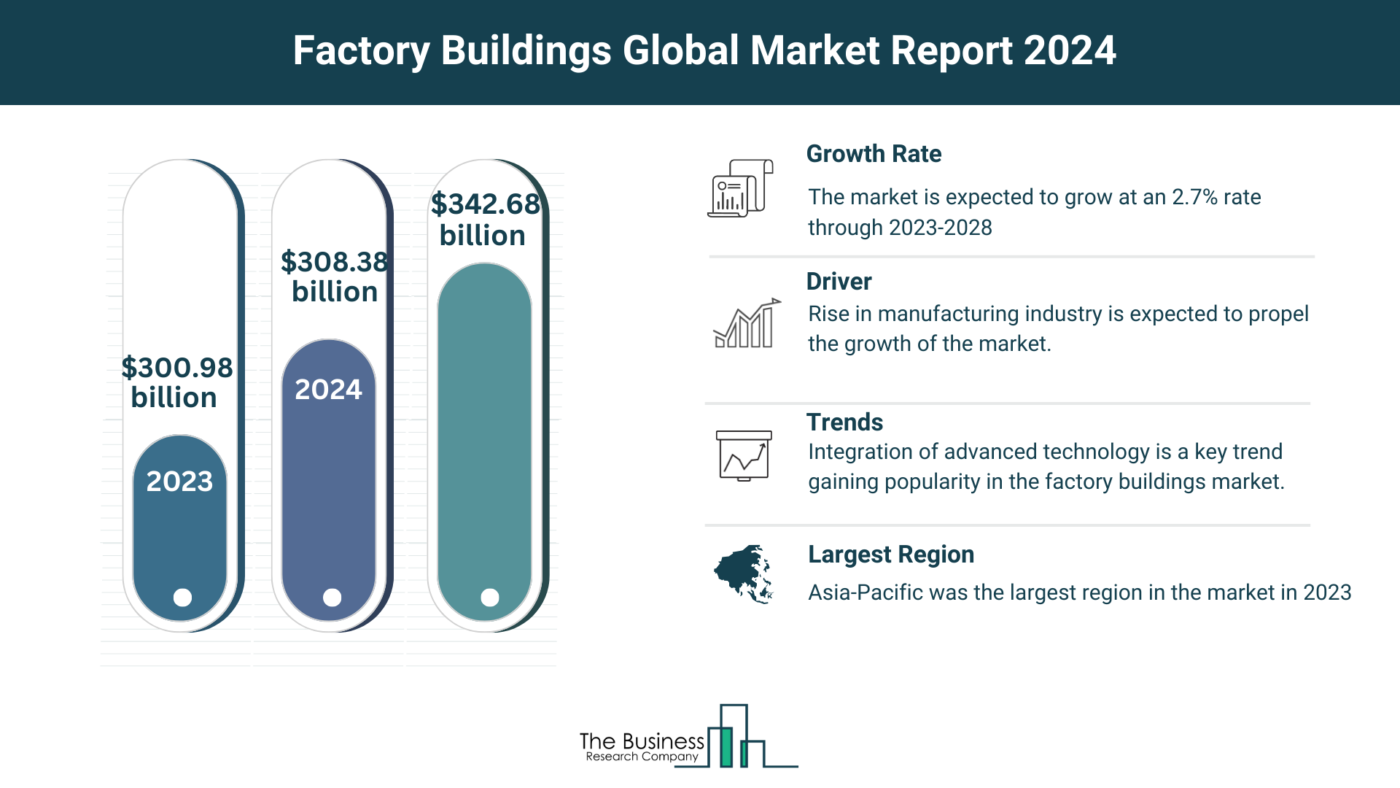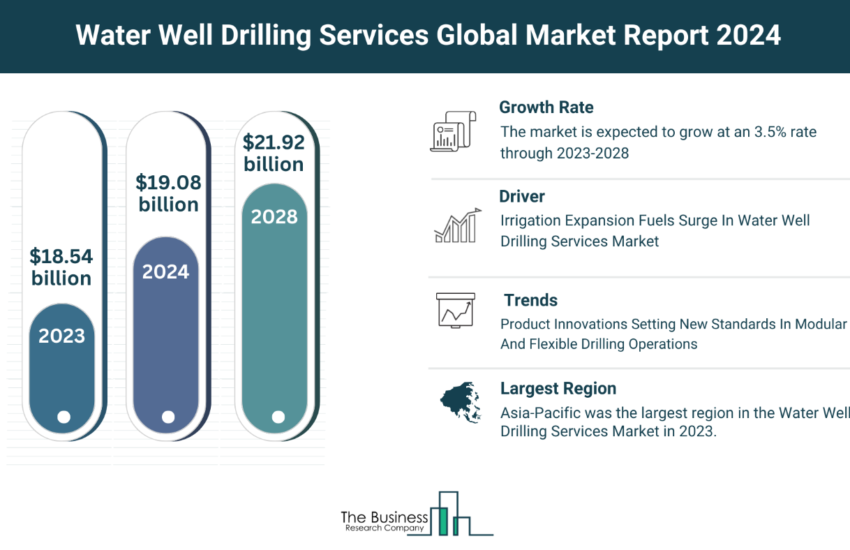What Are The 5 Top Insights From The Factory Buildings Market Forecast 2024
The Business Research Company’s global market reports are now updated with the latest market sizing information for the year 2024 and forecasted to 2033
As per The Business Research Company’s Factory Buildings Global Market Report 2024, the factory buildings market is expected to show significant growth in the forecast period.
The factory buildings market has experienced steady growth, driven by a combination of factors including industrialization, economic policies, and evolving market demands. Let’s explore the dynamics shaping this burgeoning sector.
Sustained Growth: An Overview of Market Trends
- The factory buildings market size has seen a steady increase, reaching $300.98 billion in 2023 and projected to reach $308.38 billion in 2024, with a CAGR of 2.5%.
- Historic growth drivers include industrialization, government policies, supply chain optimization, and market demand for products.
- Future forecasts indicate continued growth, with the market expected to expand to $342.68 billion by 2028, driven by global manufacturing trends, sustainable practices, and technological advancements.
Government Investments Drive Market Expansion
- Increasing government expenditures on infrastructure development play a pivotal role in boosting the factory buildings market.
- Government allocations for infrastructure stimulate investment and economic growth, driving demand for factory construction.
- Notably, China’s fixed-asset investment grew by 4.9% in 2021, fueling demand for factory buildings and infrastructure development.
View More On The Factory Buildings Market Report 2024 –
https://www.thebusinessresearchcompany.com/report/factory-buildings-global-market-report
Innovations in Construction Technology
- Integration of advanced technologies is a prominent trend in the factory buildings market, with companies leveraging innovation to maintain competitiveness.
- Examples include sustainable construction practices like the Bjarke Ingels Group’s eco-friendly furniture factory, emphasizing carbon-neutral manufacturing.
- Technological integration enhances efficiency and sustainability, catering to evolving market needs and environmental concerns.
Industry Consolidation and Acquisitions
- Mergers and acquisitions are reshaping the competitive landscape of the factory buildings market.
- Notable acquisitions include M. B. Kahn Construction Co. Inc.’s acquisition of McKenzie Construction Corp, aiming to strengthen regional presence and capabilities.
- Such strategic moves enhance companies’ market position and capabilities, driving growth and expansion.
Segmentation Insights: Understanding Market Dynamics
- The factory buildings market is segmented by type, material, construction type, application, and end-user.
- Types include residential and non-residential buildings, catering to diverse industrial needs.
- Materials range from aggregates to cement, reflecting varied construction requirements and preferences.
- Construction types encompass new construction and renovation, offering options for both expansion and modernization.
- Applications include owned and rental properties, catering to different ownership and leasing models.
- End-users span private and public sectors, reflecting the broad spectrum of industrial demand.
Regional Dynamics: Asia-Pacific Leads the Way
- Asia-Pacific emerged as the largest region in the factory buildings market in 2023, driven by robust industrial growth and infrastructure development.
- While Asia-Pacific leads, other regions are witnessing significant growth opportunities, fueled by economic development and industrial expansion.
Conclusion: Navigating Growth in Factory Construction
The factory buildings market presents promising opportunities amid evolving industrial landscapes and technological advancements. As governments prioritize infrastructure development and industries adopt sustainable practices, the demand for modern, efficient factory spaces continues to rise. Embracing innovation and strategic partnerships will be crucial for companies aiming to capitalize on this growth trajectory. With a focus on technology integration, sustainability, and market segmentation, stakeholders can navigate the dynamic landscape of factory construction and unlock new avenues for success and expansion.
Top of Form
Request A Sample Of The Global Factory Buildings Market Report 2024:
https://www.thebusinessresearchcompany.com/sample_request?id=9666&type=smp
The Factory Buildings Global Market Report 2024 provides an in-depth analysis on the factory buildings market size, trends and drivers, opportunities, strategies, and companies analysis. The countries covered in the factory buildings market report are Australia, Brazil, China, France, Germany, India, Indonesia, Japan, Russia, South Korea, the UK, and the USA, and the major seven regions are Asia-Pacific, Western Europe, Eastern Europe, North America, South America, the Middle East, and Africa.
View More Related Reports –
Office And Factory Buildings Global Market Report 2024
Buildings Construction Global Market Report 2024
Nonresidential Green Buildings Global Market Report 2024
Learn More About The Business Research Company
The Business Research Company has published over 3000+ detailed industry reports, spanning over 3000+ market segments and 60 geographies. The reports draw on 1,500,000 datasets, extensive secondary research, and exclusive insights from interviews with industry leaders.
Contact us at:
The Business Research Company: https://www.thebusinessresearchcompany.com/
Americas +1 3156230293
Asia +44 2071930708
Europe +44 2071930708
Email us at info@tbrc.info
Follow us on:
LinkedIn: https://in.linkedin.com/company/the-business-research-company
YouTube: https://www.youtube.com/channel/UC24_fI0rV8cR5DxlCpgmyFQ
Global Market Model: https://www.thebusinessresearchcompany.com/global-market-model



